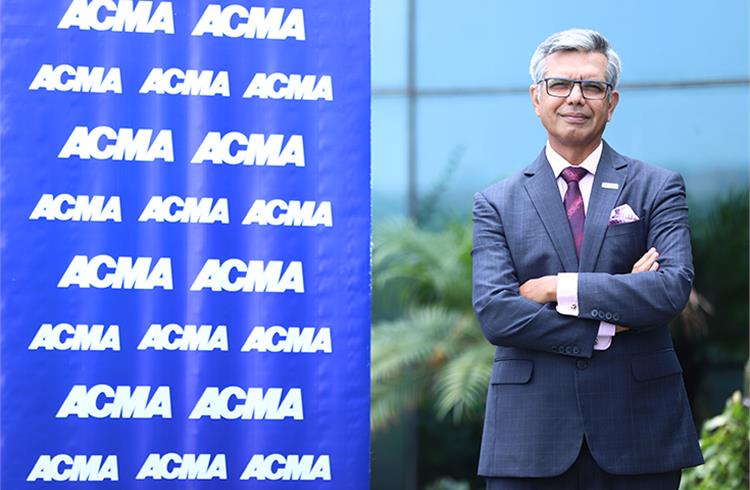ACMA’s Vinnie Mehta: 'A PLI scheme for auto electronics could act as a growth enabler.’
The Director General of the Automotive Components Association of India (ACMA) on a host of issues impacting suppliers like rising raw material prices, current demand dynamics, and the need for Atmanirbharta.
The Director General of the Automotive Components Association of India (ACMA) , which recently released its H1 FY2021 performance report , speaks on a number of issues impacting suppliers including fast-rising raw material prices, current demand dynamics in the industry, and the need for Atmanirbharta.
Can you elaborate the underlying raw material challenges that could break the speed of industry’s recovery?
There is a challenge in terms of the raw material prices going up steadily. The prices of steel, which forms 70 percent of a vehicle’s construction, have risen between 5 and 7 percent in Q2 of FY2021 as have prices for non-ferrous materials, notwithstanding the fact that compared to last year, the rupee has fallen significantly too. Moreover, we are also seeing the cost of iron ore and cooking coal simultaneously rising, and with these being the input materials for the manufacturing of steel, there is a direct correlation in the price rise.
While on one end, the cost is going up, with the economic recovery in India being steeper compared to other parts of the world, demand is also growing higher. And as a result, there could also be constraints regarding raw material availability in the near future.
ACMA has stressed incentives for localisation of auto electronics in its recommendations to the government. What is the objective?
While on the taxation front, there isn’t anything substantial that the industry can be demanding of, so what is important for us is to see how we can grow manufacturing in India and enhance localisation. If auto electronics is going to comprise about 20-25 percent of the cost of a vehicle in the future, we need to de-risk from a foreign exchange perspective as well.
Since we do not have a sizeable presence in this area, our expectation is that the PLI scheme should bring the right way forward for the localisation and manufacturing of auto electronics in the country. Therefore, we would request the Ministry of Electronics and Information Technology (MEIT) to include auto electronics manufacturing in the scheme for promotion of manufacturing of electronic components and semiconductors (SPECS) or introduce a standalone PLI scheme to push auto electronics manufacturing in the country.
A lot of the Indian component players have already struck JVs in the area of auto electronics and have positioned themselves to be able to move to the next level quickly. So, at this point if there is a policy that can act as an enabler, it would certainly enhance the pace.
Do you think the demand will be sustained across vehicle segments as we move away from the festive season?
As a thumb rule, two-wheeler sales account for 20 percent of the component industry’s revenue, whereas PVs and CVs bring 40 and 20 percent, respectively. With the Q1 (FY2021) being specifically bad, it’s a good thing that volumes in two-wheelers and passenger vehicles are reaching pre-Covid levels like what we saw during the festive season. Passenger vehicles are doing good as people want to be safe and even though the public transport is slowly getting back to normal, there continues to be a risk. Commercial vehicle sales have also started to rise and interestingly, the rural market continues to do well in both the passenger vehicle and two-wheeler segments.
Is the industry impacted by the farmers’ protest in North India? Do you think tractor sales are going to be slow as a result?
While none of the ACMA members have raised an alarm as yet, we are concerned that if the situation of the protest extends further, there could be some disruptions. Having said that, the supply chain does factor in a buffer of three to four weeks of inventory at any given point in time.
Coming to tractor sales, it is a very cyclical business because tractors are predominantly required during the sowing season. And right now, being closer to the crop harvest, I don’t think so there will be such a huge impact on tractor sales due to the ongoing protest.
RELATED ARTICLES
Setrans Mobility Booster Charging top-up 25% EV range in 15 minutes
Two enterprising tech-savvy entrepreneurs Rana Roshan Singh and Vivek Ummat of Noida, Uttar Pradesh-based start-up Setra...
'Our products are proudly 100% designed and made in India'
Creatara Mobility, a New Delhi based electric two-wheeler startup, claims to have tackled various challenges in making i...
'EVs have been around for a much smaller time than ICE, so best practices are still evolving'
EV OEMs and start-ups are under pressure to reduce production costs and bring them close to ICE counterparts. Vaibhav Ku...





 30 Dec 2020
30 Dec 2020
 5701 Views
5701 Views





 Autocar Pro News Desk
Autocar Pro News Desk




